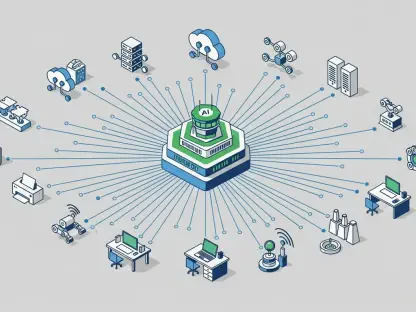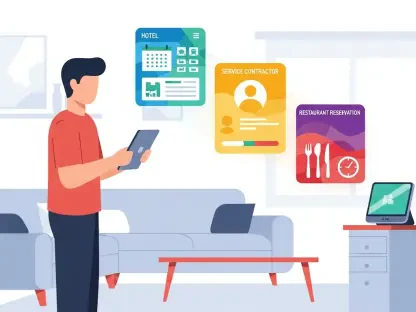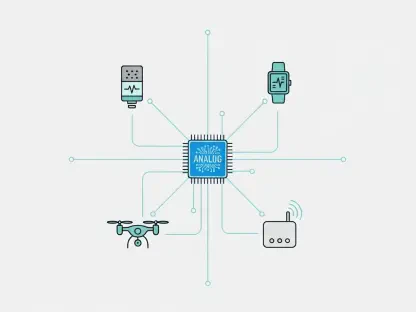Welcome to an insightful conversation with Laurent Giraid, a renowned technologist with deep expertise in Artificial Intelligence, specializing in machine learning, natural language processing, and the ethical implications of AI. In this interview, we dive into the fascinating findings of a recent MIT report on the shadow AI economy and the rapid, often hidden, adoption of AI tools in the workplace. Laurent sheds light on the surprising trends of employees leveraging personal AI solutions, the struggles of custom enterprise AI initiatives, and the future of AI integration in corporate environments. Join us as we explore how this underground movement is reshaping productivity and what it means for businesses striving to harness AI effectively.
Can you walk us through what the concept of a ‘shadow AI economy’ means and how it’s playing out in workplaces today?
I’m glad to break this down. The shadow AI economy refers to a phenomenon where employees are using personal AI tools—like ChatGPT or Claude—for their daily work tasks without formal approval or integration from their companies. According to the MIT report, a staggering 90% of workers are doing this, often multiple times a day, even though only 40% of organizations have official AI subscriptions. It’s happening under the radar because employees find these tools more accessible and effective for quick tasks like drafting emails or analyzing data. They’re not waiting for corporate IT departments to roll out sanctioned solutions; they’re solving problems on their own terms.
Why do you think so many employees are bypassing official channels to adopt these personal AI tools?
It largely comes down to speed and usability. Corporate AI solutions often take months or even years to implement due to procurement processes, compliance checks, and customization needs. Meanwhile, a worker can sign up for a consumer AI tool in minutes and start seeing results immediately. There’s also a cultural factor—employees today are more tech-savvy and comfortable experimenting with new tools. They’re not willing to wait for a top-down solution when they can address their needs right now with something that feels intuitive and flexible.
The MIT report highlights a significant gap between employee usage of AI and corporate adoption. What does this disparity reveal about the current state of enterprise technology?
This gap—90% of employees using personal tools versus only 40% of companies having official subscriptions—signals a disconnect between worker needs and corporate strategy. It shows that employees are often ahead of the curve, identifying tools that deliver immediate value. On the other hand, enterprises are still grappling with how to scale AI in a secure, compliant, and cost-effective way. It’s reminiscent of past tech waves, like when smartphones entered the workplace. Initially, companies resisted, but eventually, they had to adapt to the ‘bring your own device’ trend. We’re seeing a similar bottom-up push with AI, and it’s a wake-up call for businesses to rethink their adoption strategies.
One striking finding is that 95% of custom enterprise AI pilots are failing. What do you see as the root causes of these setbacks?
The high failure rate of custom enterprise AI pilots often stems from a lack of adaptability and user-centric design. Many of these systems are built with rigid frameworks that don’t evolve based on user feedback or changing workflows. The MIT report points out that these tools often require too much manual input and don’t retain context over time, which frustrates users. Additionally, there’s sometimes a mismatch between what executives think is needed and what employees actually use in their day-to-day tasks. Without that alignment, these expensive bespoke solutions end up as shelfware—unused and ineffective.
How do consumer AI tools manage to outperform enterprise solutions in terms of user experience?
Consumer AI tools, like ChatGPT, are designed with the end user in mind from the ground up. They prioritize simplicity, responsiveness, and flexibility, so even non-technical users can jump in and get results without a steep learning curve. Enterprise tools, by contrast, often come with layers of complexity due to security protocols, integration requirements, and customization for specific industries. While those features are important, they can make the tools feel clunky and unintuitive. Employees gravitate toward consumer tools because they just work out of the box, even if they lack some of the governance features enterprises need.
The report notes that workers prefer AI for quick tasks but still rely on humans for complex projects. What’s driving this divide in usage?
It’s really about the current limitations of AI in terms of memory and contextual understanding. For quick, one-off tasks like drafting an email or summarizing data, AI shines because it can process and generate content rapidly. But for complex, multi-step projects that require deep domain knowledge, historical context, or nuanced decision-making, most AI tools fall short. They often reset after each interaction, lacking the ability to ‘remember’ prior inputs or adapt over time. That’s why 90% of workers still turn to human colleagues for high-stakes work—trust and adaptability remain human strengths for now.
Another key insight from the report is that external partnerships with AI vendors succeed at a much higher rate than internal builds. What advantages do these partnerships bring to the table?
External partnerships often succeed—67% deployment rate versus 33% for internal builds—because vendors bring specialized expertise and scalability that in-house teams may lack. These partners focus solely on AI development, so they can iterate faster, offer cutting-edge solutions, and provide ongoing support. The MIT report also highlights that successful companies treat these vendors as business service providers, not just software sellers, holding them accountable for real outcomes like cost savings or productivity gains. This collaborative approach ensures the technology aligns with business goals, something internal projects often struggle with due to resource constraints or siloed thinking.
Industries like healthcare and finance are taking a slower approach to AI adoption. How do you interpret this cautious stance?
I see it as a sign of maturity rather than resistance. Healthcare and finance deal with highly sensitive data and strict regulations, so rushing into AI adoption could expose them to significant risks—think data breaches or compliance violations. The MIT report notes that these industries are running pilots but avoiding structural upheaval, which is smart. They’re taking time to ensure AI tools meet stringent standards for security and ethics before scaling. Meanwhile, sectors like tech and media, which can absorb more risk, are moving faster. It’s not about lagging behind; it’s about getting it right.
Looking at where AI is delivering value, the report mentions significant returns from back-office automation rather than high-profile areas like sales. Why do you think these less glamorous applications are yielding better results?
Back-office automation—like customer service processing or document management—often involves repetitive, rule-based tasks that AI can handle exceptionally well. The MIT report cites savings of $2-10 million annually in some cases by cutting out external contracts or agency fees. These applications don’t get the spotlight like sales or marketing AI, which soak up 50% of budgets, but they deliver measurable ROI because they streamline inefficiencies without disrupting core operations. It’s a low-risk, high-reward area, and honestly, it’s where AI’s current strengths in pattern recognition and task automation are best applied.
What is your forecast for the future of enterprise AI adoption, especially in bridging the gap between shadow usage and official strategies?
I’m optimistic that we’ll see a convergence between shadow AI usage and corporate strategies over the next few years. Companies are starting to recognize the value employees are getting from personal tools and are learning from those patterns to inform their own deployments. We’ll likely see more flexible, user-friendly enterprise solutions that borrow from the consumer AI playbook while adding necessary guardrails for security and compliance. The shift from building to buying, as the MIT report suggests, will also accelerate, with more partnerships driving innovation. Ultimately, I think AI will become as ubiquitous in the workplace as email or cloud tools are today, but it’ll require a cultural shift—embracing bottom-up adoption while ensuring top-down governance—to get there.









